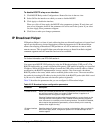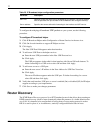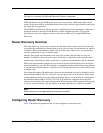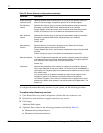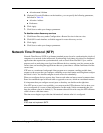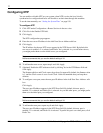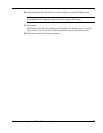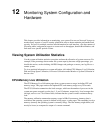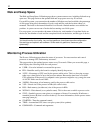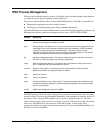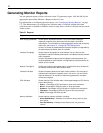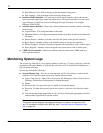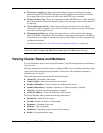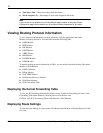
Nokia Network Voyager for IPSO 4.0 Reference Guide 479
12 Monitoring System Configuration and
Hardware
This chapter provides information on monitoring your system.You can use Network Voyager to
monitor many aspects of your IP security platform in order to better maintain performance and
security. You can, for example, monitor state information for each interface, view the contents of
IP routing tables, and generate reports on events such as throughput, bandwidth utilization, and
link states over specific periods of time.
Viewing System Utilization Statistics
Use the system utilization statistics to monitor and tune the allocation of system resources. For
example, if the percentage shown under file system capacity becomes a high percentage, you
should take action, such as deleting old IPSO images and packages or move your log files to a
remote system.
To view statistical information on system utilization, click either CPU-Memory Live Utilization,
Disk and Swap Space Utilization, or Process Utilization under Monitor > System Utilization in
the tree view.
CPU-Memory Live Utilization
The CPU-Memory Live Utilization page shows system resources usage, including CPU and
memory usage. This page retrieves the updated CPU and memory usage every 20 seconds.
The CPU Utilization summarizes the load averages, which are the number of processes in the
system run queue averaged over the last 1, 5, and 15 minutes, respectively. Load averages that
are high, such as over 2 in all three fields, indicate that the system is under continuous heavy
load.
The memory utilization summarizes memory usage in KBs. Free memory (memory that is
available to the operating system) is defined as free pages + cache pages. The remainder is active
memory (memory the operating system is currently using). The free memory might differ (will
mostly be lower) as compared to output of a vmstat command.



